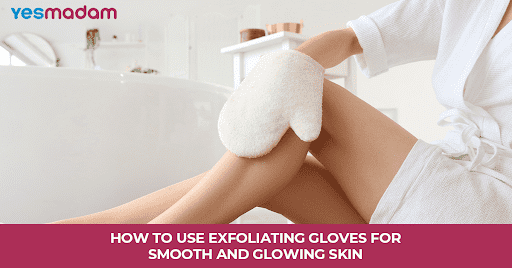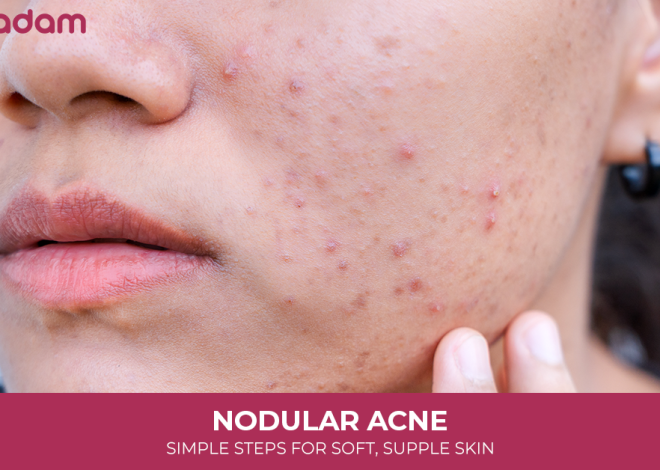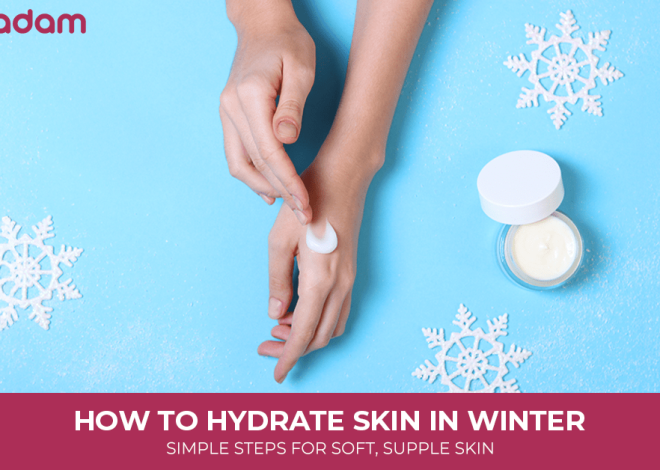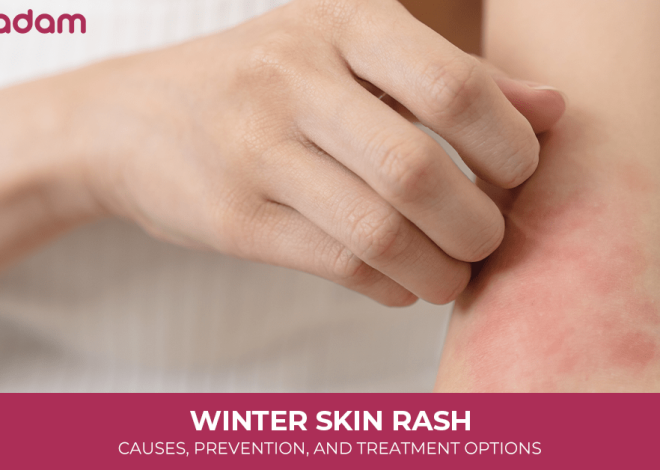
How to Use Exfoliating Gloves for Smooth and Glowing Skin
Having dull and dry skin is a sign that your skin isn’t getting the care it deserves. The reasons could vary, from a lack of time to follow a proper skincare routine to not being aware of simple methods and remedies that can help. That’s where exfoliating gloves, also known as exfoliation mitts, come in.
These are designed to restore your skin’s glow and softness, giving it the care it truly deserves. In fact, exfoliating gloves are so effective, they can even replace expensive creams and body butters. Curious to learn more? Read the blog to find out how to use exfoliating gloves and achieve the skin texture you’ve always wanted.
Let’s get started…

Table of Contents
What is an Exfoliating Glove?
An exfoliating glove is a skincare product designed to remove dead skin cells from the surface of the body, helping you reveal clearer, smoother, and healthier skin hidden beneath. These gloves are made to fit comfortably over your hands and are crafted from textured materials like nylon, loofah, or natural fibers. Their textured surface softly removes dead skin cells, leaving your skin looking fresh and glowing.
How Do Exfoliating Gloves Work?
Exfoliating gloves are designed to remove dead skin cells through mechanical exfoliation. The material used to make these gloves gently scrubs the skin, helping you achieve a smooth, impurity-free texture. This process not only exfoliates the skin but also stimulates blood circulation, which plays a key role in promoting new cell renewal.
Exfoliating Gloves Benefits Explained
Exfoliating gloves are more than just a shower tool, they help maintain healthy, glowing skin. By physically removing dead skin cells and stimulating circulation, these gloves can enhance your skincare routine in multiple ways.
Here are some prime benefits of using exfoliating gloves
Mechanical Exfoliation:
Exfoliating gloves are specially designed to create friction on the skin, helping with exfoliation and effortlessly removing the outermost layer of dead skin cells.
Textured Materials:
Materials used to make these gloves, like nylon, loofah, or silk, help grip the skin and gently abrade the upper layer, loosening and removing dead skin cells.
Increased Circulation:
The friction generated by these gloves helps regulate and improve blood flow to the skin’s surface, contributing to the rejuvenation of skin cells.
Lymphatic Drainage:
Exfoliating gloves also contribute to lymphatic drainage by promoting the flow of lymph fluid, which helps remove toxins and boosts the immune system.
Improved Absorption:
By removing dead skin cells, exfoliating gloves can create a more receptive surface for lotions and other skincare products, allowing them to penetrate more effectively.
Ingrown Hair Prevention:
Exfoliating gloves can help prevent ingrown hairs by removing the dead skin cells that can clog pores and trap hair follicles.
Moisturizer Absorption:
The gloves’ deep cleansing method can also improve the absorption of moisturizers.

How to Use Exfoliating Gloves: A Complete Step-by-Step Guide
Exfoliating gloves can help remove dead skin cells, improve blood circulation, and enhance the absorption of skincare products. Here’s how to use them the right way:
Step 1: Prep Your Skin
- Take a warm shower or bath and soak for at least 5–10 minutes.
- Warm water opens up pores and loosens dead skin cells, making exfoliation more effective and comfortable.
Step 2: Wet the Gloves
- Soak the exfoliating gloves in warm water until fully saturated.
- Squeeze out the excess water, keeping them damp but not soaking wet.
- Never use dry gloves on dry skin—they can be too harsh and may cause irritation.
Step 3: Start Exfoliating Your Body
Now you’re ready to begin exfoliating:
- Use long, firm strokes to scrub your skin.
- Start at your ankles and move upwards towards your heart. This supports healthy blood circulation.
- Do the same for your arms, starting from your wrists and moving upward.
- Apply gentle pressure, just enough to remove dead skin, not to scratch or damage it.
- Avoid using soap during exfoliation; it may reduce the glove’s grip on dead skin.
Step 4: Exfoliate Your Face (Optional)
- Use a separate, softer glove designed specifically for facial skin.
- Use gentle circular motions to exfoliate your cheeks, forehead, and chin.
- Be especially gentle around sensitive areas like under the eyes.
Step 5: Rinse Your Skin
- Rinse your entire body and face thoroughly with lukewarm water to wash away all the dead skin cells.
- Make sure no residue is left behind.
Dry & Moisturize
- Pat your skin dry using a soft, clean towel, don’t rub harshly.
- Immediately apply a hydrating moisturizer or body lotion. This helps lock in moisture and soothe freshly exfoliated skin.
Clean and Dry the Gloves
- Rinse the gloves with soap or body wash to remove any buildup.
- Squeeze out excess water and hang them in a well-ventilated area to air dry completely.
- Avoid leaving them damp in a closed space to prevent bacterial growth.
Truth or Myth? What You Didn’t Know About Exfoliating Gloves
wondering whether you should use exfoliating gloves or not? Here’s a quick myth-buster to help you decide if they’re right for your skin.
| Myth | Fact |
| Exfoliating gloves are too harsh for all skin types | Many gloves are made with gentle materials suitable for sensitive skin |
| Daily exfoliation with gloves gives better results | Overuse can damage skin; 2–3 times a week is usually enough |
| Exfoliating gloves remove tan | They only remove dead skin, not deep pigment like natural or sun tans |
| You don’t need to clean exfoliating gloves | Unwashed gloves can harbor bacteria; cleaning them regularly is essential |
| Gloves work the same as chemical exfoliants | They offer mechanical exfoliation, which works differently from chemicals |
| Exfoliating is only for people with dry skin | All skin types benefit from regular exfoliation when done correctly |

Conclusion
Exfoliating gloves are a simple yet powerful addition to your skincare routine. When used properly, they help slough off dead skin, improve circulation, and boost product absorption, leading to healthier, smoother, and more radiant skin. learning how to use exfoliating gloves the right way ensures you get the best results without irritating your skin. Exfoliate 2–3 times a week, follow the proper steps, and keep your gloves clean to enjoy long-term benefits and visibly glowing skin.
FAQs
1. How to use exfoliating gloves correctly?
Wet your skin and the gloves, apply a mild cleanser or soap, and gently massage in circular motions. Focus on rough areas like elbows, knees, and feet, then rinse and moisturize.
2. Should you use exfoliating gloves on dry or wet skin?
Always use them on wet skin to avoid irritation. Shower or soak first to soften your skin for smoother exfoliation.
3. Do you need to use soap with exfoliating gloves?
Yes, pairing them with a gentle body wash or cleanser enhances cleansing and helps remove oils and dirt effectively.
4. How often should you use exfoliating gloves?
2–3 times a week is ideal for most skin types. Overuse can lead to redness or dryness, especially on sensitive skin.
5. Can exfoliating gloves be used with scrubs?
Yes, but be cautious. Combining both may be too abrasive for some skin types. Use either a glove or scrub, not both together frequently.
6. How to clean and store exfoliating gloves?
Rinse thoroughly after use, air dry completely, and wash weekly with warm soapy water to avoid bacteria buildup.
7. Are exfoliating gloves suitable for sensitive skin?
They can be used gently, but choose softer material gloves like silk or loofah. Always test on a small area first.
8. Can you use exfoliating gloves on your face?
Facial skin is delicate, so it’s best to avoid using body exfoliating gloves on your face. Opt for tools specifically designed for facial use.
9. Exfoliating gloves for body benefits?
They help remove dead skin, improve circulation, promote lymphatic drainage, and leave your skin smoother and more radiant.
10. Can we use exfoliating gloves daily?
Using them daily is not recommended for most skin types. Limit to a few times a week to prevent over-exfoliation and skin damage.



